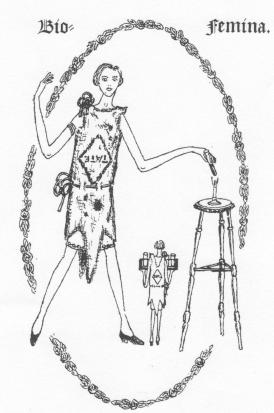Women in the Biochemical Society
At the inaugural meeting of the Biochemical Club in 1911, attendees voted to exclude women from membership. Are there any clues in the Society’s archives, held at the Wellcome Trust Library in London, which might explain why women had initially been excluded, and why this decision was subsequently revoked in October 1912?
An examination of the minute books of meetings for 1911 to 1928 (archival reference SA/BIO/A/3/1) revealed that the draft rules for the new Club had not explicitly debarred women from membership; these allowed for two categories of membership; honorary members, described as ‘men of distinction’, and ordinary members, designated as ‘persons interested’. However, when a letter sent by a Mrs Rosenheim (undoubtedly Mary Christine Rosenheim, nee Tebb) enquiring about the possibility of membership was raised at the inaugural meeting, those present passed a motion proposed by R. H. A. Plimmer which excluded women from membership, substituting ‘men’ in place of ‘persons’ in the category of ordinary membership.
This state of affairs was soon reversed. Indeed, the minutes of 1912 reveal that communications by women biochemists were conveyed to meetings of the Club, even if women themselves were ineligible for membership. At a special general meeting in October 1912, during which the members voted to change the name from the Biochemical Club to the Biochemical Society, a motion was passed which replaced ‘men’ with ‘persons’. Following the alteration of the rules, the minutes record women reading papers at meetings. In February 1913 the first women were admitted to the Society: Harriette Chick, Ida Smedley and Muriel Wheldale. By 1919, 21 of the 209 members listed in the yearbook were women. In 1927, Ida Smedley became the first woman to Chair the Biochemical Society.
The decision taken by those present at the inaugural meeting of the Biochemical Club to exclude women from membership was in keeping with the responses of other scientific bodies in the nineteenth and early twentieth centuries. The first woman was admitted to the Royal Institute of Chemistry in 1892, but this was more a product of oversight than forward thinking: Emily Lloyd applied to sit the entrance exam, a prerequisite for membership, using her initials only. Women first sought admission to the Chemical Society in 1892 but were only admitted as members in 1920; the first woman admitted as a member was biochemist Ida Smedley. The Physiological Society was founded in 1876 but only voted to admit women as members in 1915, following two years of debates on the issue.
Moreover, no women were elected to the Royal Society until 1945 when crystallographer Kathleen Lonsdale and the biochemist Marjory Stephenson were elected Fellows. In an interview conducted in 1983, Professor A.C. Chibnall, the longest-serving Secretary of the Biochemical Society recalled:
I was on the Council of the Royal when we had taken legal advice on admitting women, and were told we had been unlawfully keeping women down since the Act of 1922 [the 1919 Sex Disqualification (Removal) Act]. We decided to take two in, Marjory Stapleson [Stephenson] and a woman who was doing the Xray of the water molecule at University College…. What a surprise when Council were told, I’ll always remember it!’ (SA/BIO/D/1/56: Transcript of interview by Neil Morgan with Professor A.C. Chibnall, October 8 1983)
Chibnall’s interview also gives a fascinating insight into the ways in which the early women biochemists were perceived. Chibnall recalled how Dorothy Jordan Lloyd, who first published in the Biochemical Journalin 1920, had been described by one colleague as ‘the only woman you can treat like a man on Committee’. Muriel Wheldale Onslow and Ida Smedley Maclean, two of the first three women admitted as members to the Biochemical Society, were both remembered by Chibnall primarily in reference to their marital status:
A plant chemist who married Onslow – brought out a textbook on plant biochemistry… Really quite distinguished.
Mrs Maclean. Yes. She was at Manchester. She worked for a time as Robinson’s assistant and then she married Maclean.


